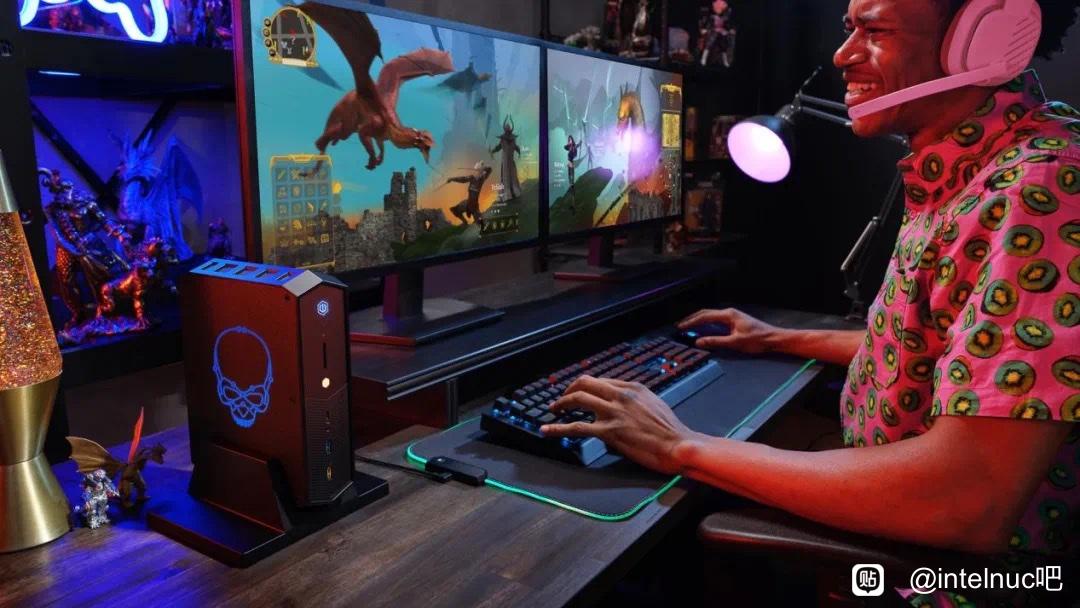Intel ditches Nvidia for its own Arc GPU in new NUC mini PC
Intel’s latest tiny gaming system will allegedly use the most powerful mobile Arc GPU

A user on the forums of Chinese tech giant Baidu has posted apparent confirmation of the next generation of Intel NUC mini PCs, including a detailed hardware breakdown (please note that the page linked there is in Chinese).
Naturally, the NUC 12 – codenamed ‘Serpent Canyon’, following up from the ‘Phantom Canyon’ NUC 11 – will be using a new 12th-generation Alder Lake i7-12700H processor from Intel, upgrading from the i7-1165G7 found in its predecessor. This alone is a significant upgrade, but what's more interesting is the graphics card.
While the previous NUC 11 models all used Nvidia GeForce GPUs (up to the RTX 3080 found in the console-killing NUC 11 Extreme), the NUC 12 is stated to use Intel’s own Arc A770M laptop GPU instead. With 32 Xe-cores and 16GB of video memory, the A770M is currently the highest-spec graphics card in Intel’s Arc mobile lineup and is already appearing elsewhere in gaming laptops.
While we don’t know exactly how well the A770M performs just yet, expectations put it in the same performance ballpark as Nvidia’s RTX 3060 Ti - in other words, a decent choice for 1080p gaming. There’s no news on how much the NUC 12 will cost yet, nor a release date, though the Baidu forum user does claim that it will be ‘available soon’.
The Intel NUC series are small-form-factor PCs that can be used for a variety of purposes, chiefly for use in business and educational environments where there’s no space for a full-size desktop. However, some NUCs are designed with gaming in mind, and this new model seems to fit that bill.

Analysis: Is China the staging ground for the beginning of a GPU war?
This was perhaps an inevitable move from Intel now that its Arc graphics cards are finally hitting the market (albeit only in China so far). While Intel might realistically be gunning for its CPU competitor AMD, Nvidia still holds the biggest chunk of the discrete GPU market so it wouldn’t make much sense for Intel to continue using a major competitor’s hardware in its products.
Intel’s laser focus on the Chinese market for the new Arc GPUs has been interesting, and has made the manufacturer’s goals fairly clear. It very much looks like Intel isn’t aiming to challenge Nvidia’s dominance of the high-end graphics card arena, but rather to take on AMD at the more affordable end of the market.
Sign up for breaking news, reviews, opinion, top tech deals, and more.
Chinese consumers (and the Asian market as a whole) are more interested in budget GPUs, especially given the prevalence of internet cafes in that part of the world. Still, Intel’s rollout of the new Arc cards hasn’t exactly been smooth. High initial prices on the Arc A380 desktop and faltering initial performance figures from the Arc A7 cards have painted a troubled picture of Intel's long-awaited return to the GPU market.
We reached out to Intel for comment, and had our suspicions confirmed that the Chinese market is being targeted first because of the prevalence of budget GPUs there. Intel also added that they plan to ‘scale Arc A-series 3 graphics products with our partners globally in the coming weeks’ and noted that the Arc rollout has been heavily affected by ‘software readiness delays’ and COVID-19 lockdowns.

Christian is TechRadar’s UK-based Computing Editor. He came to us from Maximum PC magazine, where he fell in love with computer hardware and building PCs. He was a regular fixture amongst our freelance review team before making the jump to TechRadar, and can usually be found drooling over the latest high-end graphics card or gaming laptop before looking at his bank account balance and crying.
Christian is a keen campaigner for LGBTQ+ rights and the owner of a charming rescue dog named Lucy, having adopted her after he beat cancer in 2021. She keeps him fit and healthy through a combination of face-licking and long walks, and only occasionally barks at him to demand treats when he’s trying to work from home.